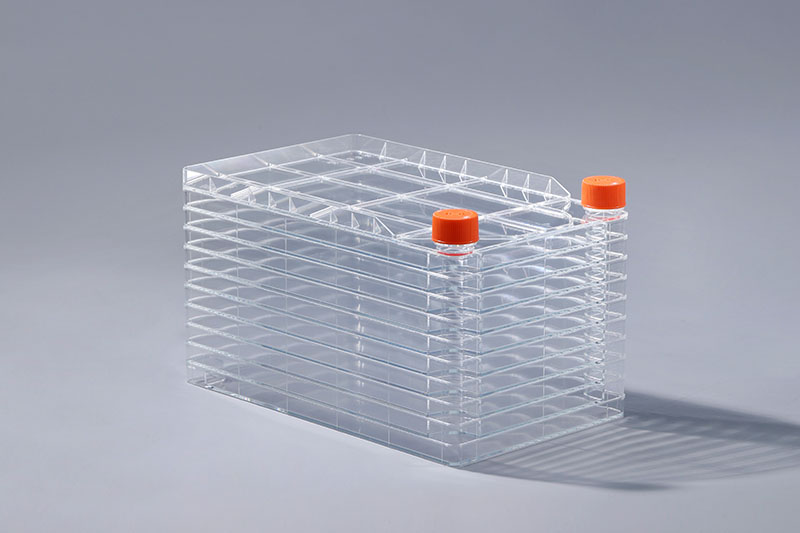The cell factory is a well-designed cell culture device. The cell factory culture technology is a new generation of cell culture technology that uses the cell factory for large-scale cell culture, and has been widely used in the vaccine industry.
The cell factory culture technology has been applied in foreign countries for more than 40 years, but it has been popularized in my country a little later. It uses the cell factory to maximize the cultivation surface in a limited space, thereby saving a lot of workshop space. It can achieve the purpose of expanding production capacity without any workshop modification. It is especially suitable for adherent cell culture and can also be cultured according to The area increases the number of layers of the cell factory.
Cell factory culture technology has been widely used in the vaccine industry. For example, hepatitis A vaccine, which uses cell factories for cell culture and virus amplification technology has been very mature. In addition, in the production of other vaccines based on adherent cell culture, such as varicella vaccine, leprosy vaccine, polio vaccine and other products, it gradually replaces the traditional roller bottle process, and uses bioreactors to produce Japanese encephalitis and rabies vaccines. , The cell factory has also played an irreplaceable role in the rapid and large-scale expansion steps of its early cells.
In foreign countries, cell factory culture technology has been a very mature and common technology for culturing cells in vitro. Such as V79-4, chicken embryo fibroblasts, L929, HEL299 cell culture, EPO expression, stem cell culture, etc. Due to its convenient and safe operation method, less space occupation, and good controllability, the cell factory has been accepted by more and more domestic production and scientific research users, and its application will become more and more extensive.
The FAI climbed 5.9 percent year-on-year in the first 11 months of 2018, quickening from the 5.7-percent growth in Jan-Oct, the National Bureau of Statistics (NBS) said Friday in an online statement.
The key indicator of investment, dubbed a major growth driver, hit the bottom in August and has since started to rebound steadily.
In the face of emerging economic challenges home and abroad, China has stepped up efforts to stabilize investment, in particular rolling out measures to motivate private investors and channel funds into infrastructure.
Friday's data showed private investment, accounting for more than 60 percent of the total FAI, expanded by a brisk 8.7 percent.
NBS spokesperson Mao Shengyong said funds into weak economic links registered rapid increases as investment in environmental protection and agriculture jumped 42 percent and 12.5 percent respectively, much faster than the average.
In breakdown, investment in high-tech and equipment manufacturing remained vigorous with 16.1-percent and 11.6-percent increases respectively in the first 11 months. Infrastructure investment gained 3.7 percent, staying flat. Investment in property development rose 9.7 percent, also unchanged.
 English
English



















































